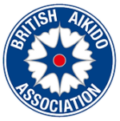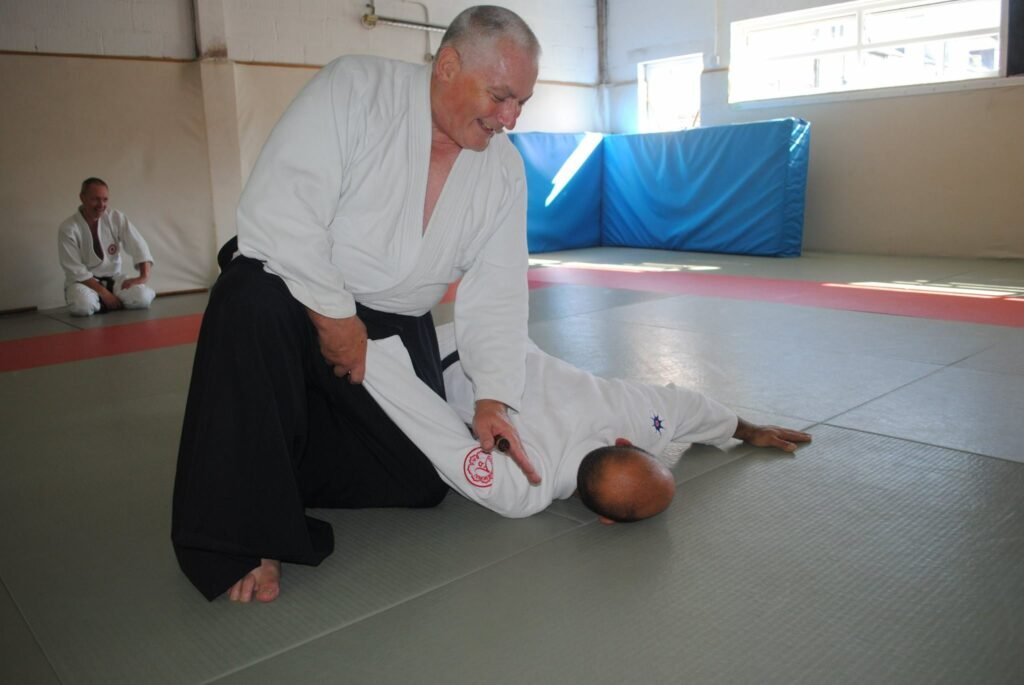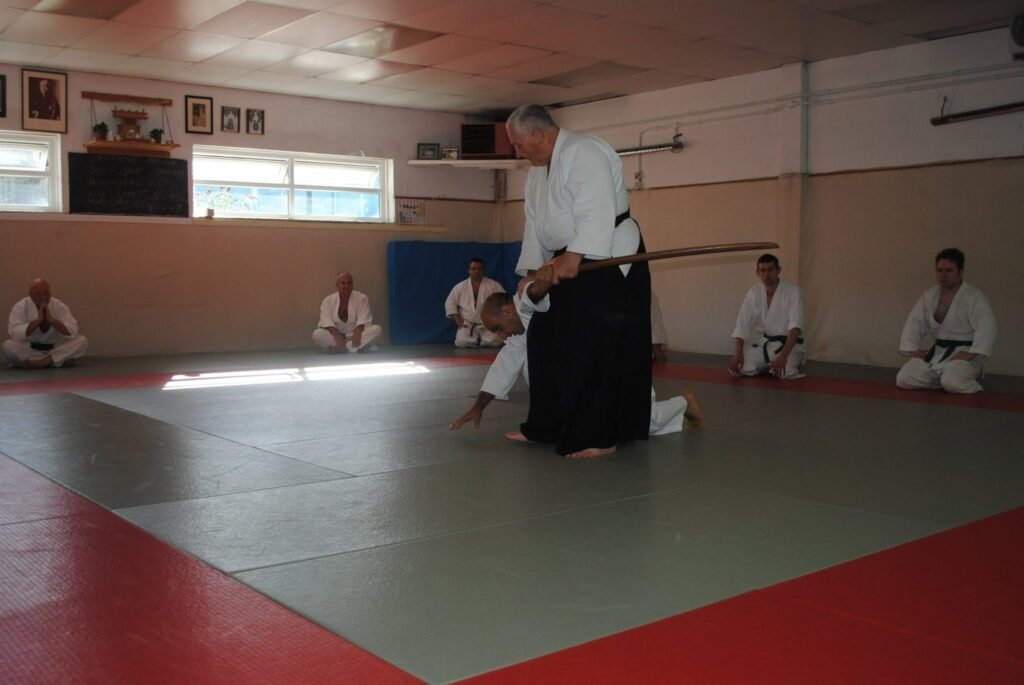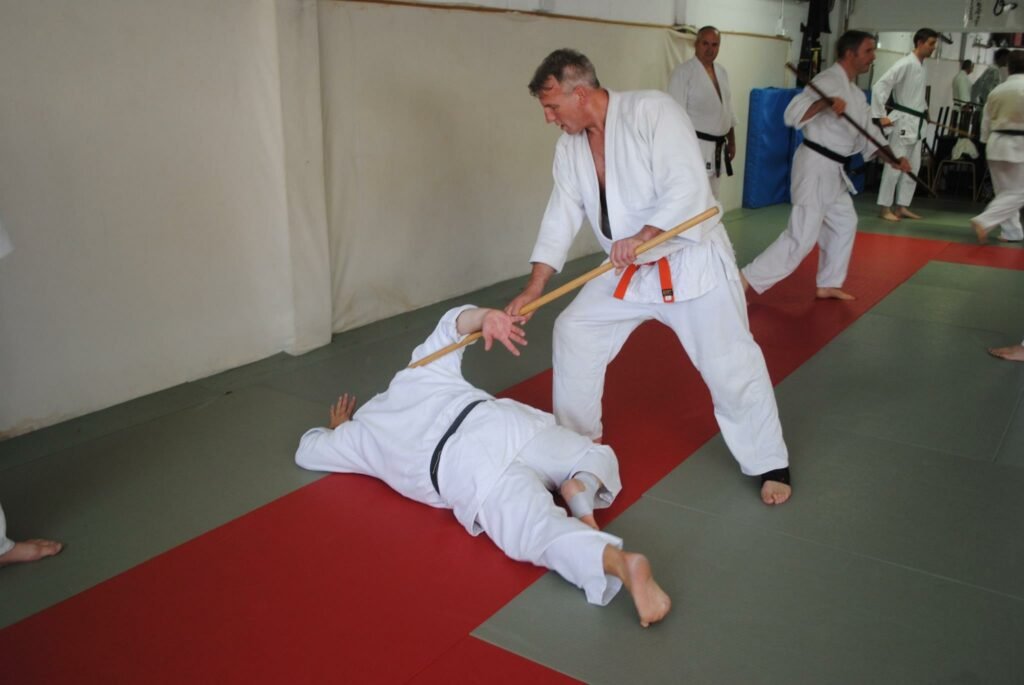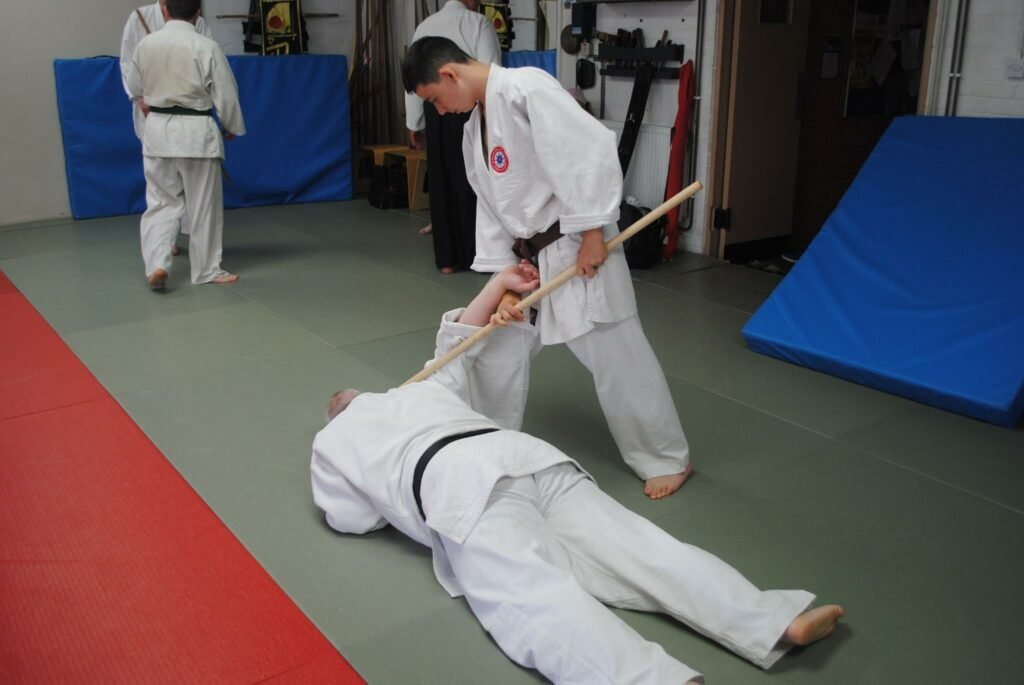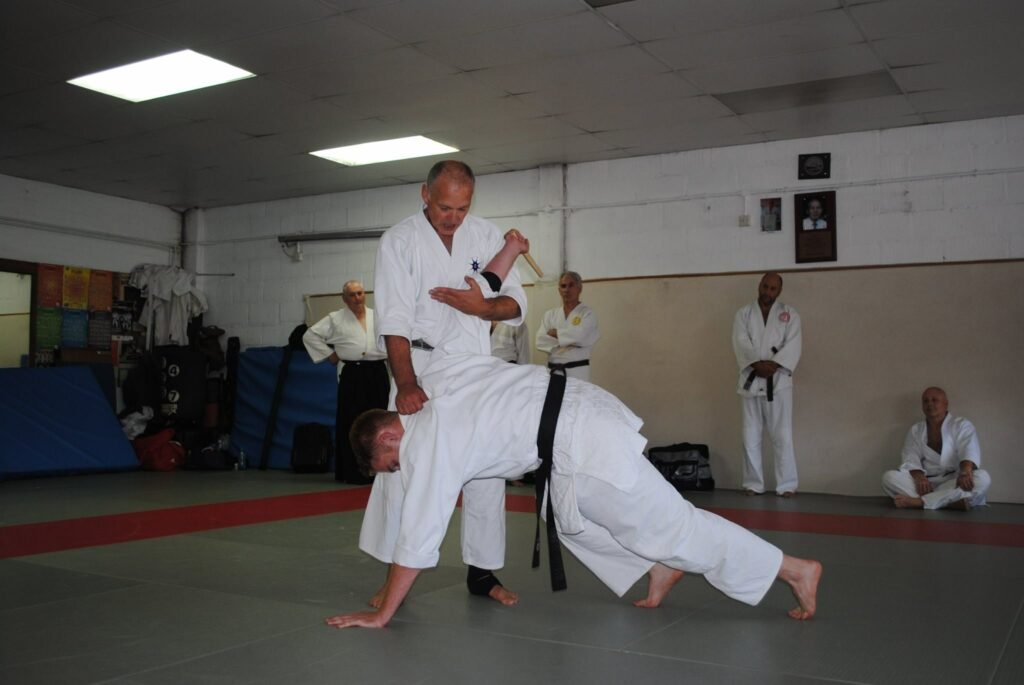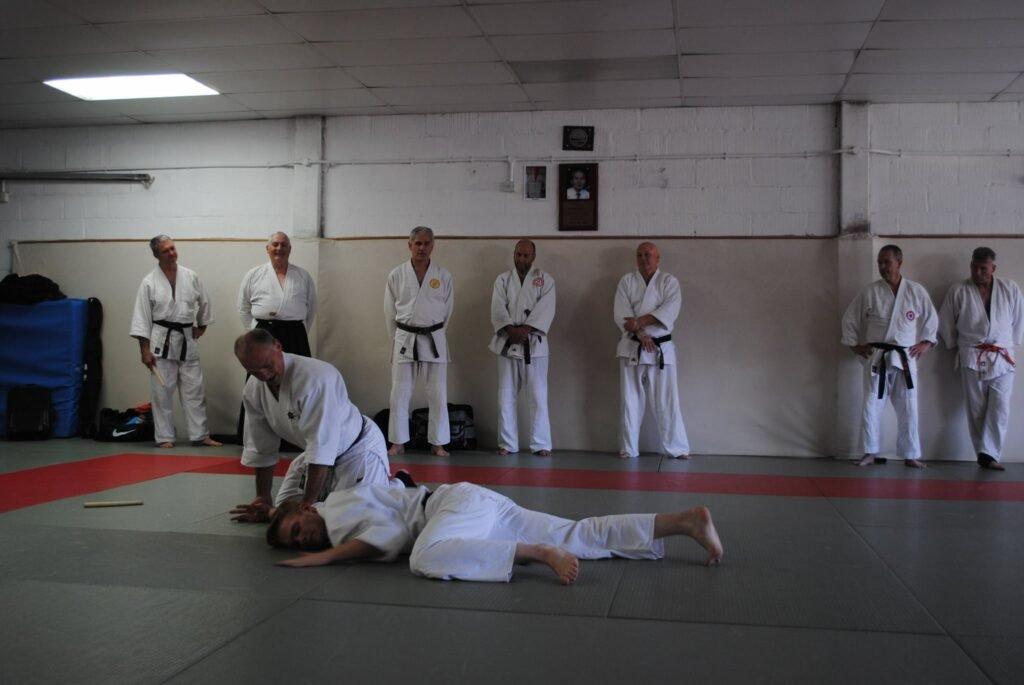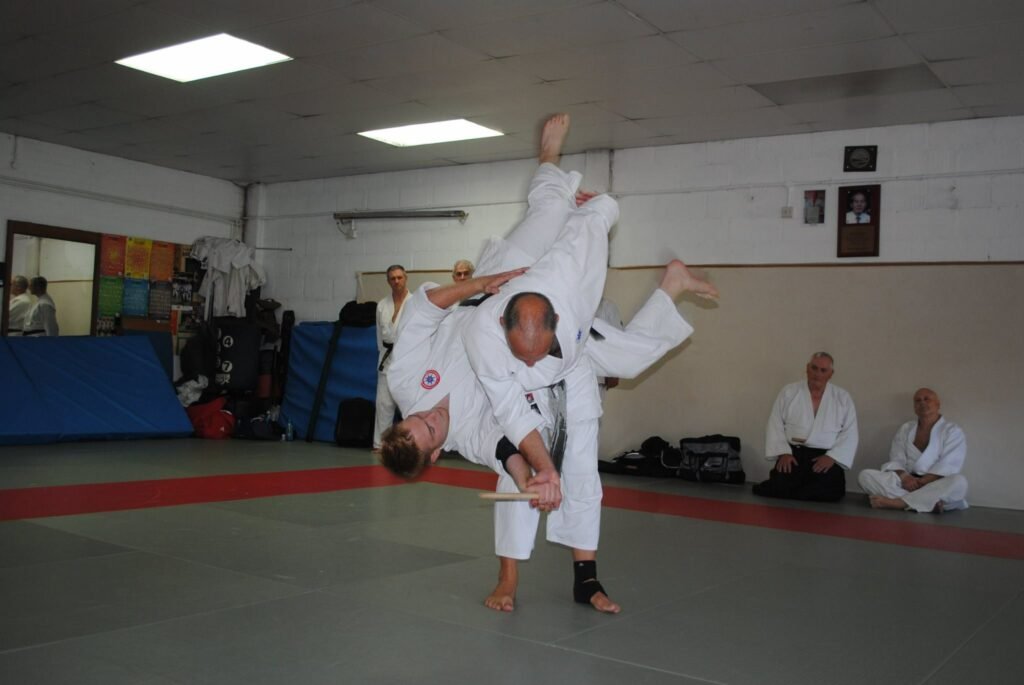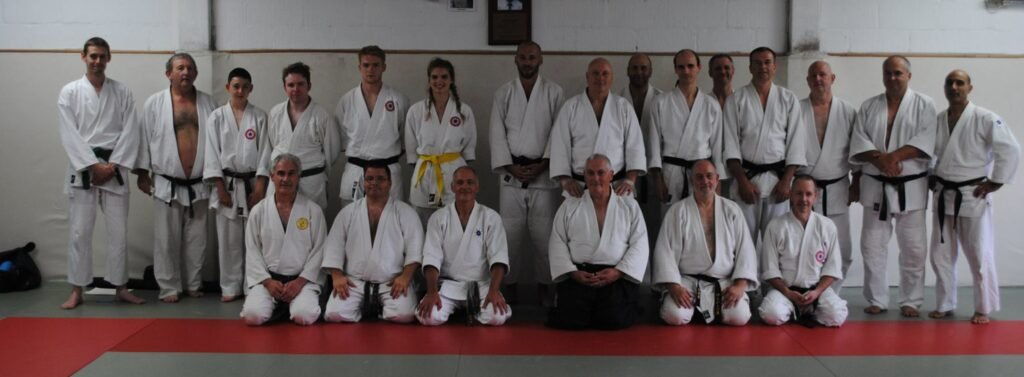
The 2016 SOTR was hosted by Dick Todd at the Thanet Martial Arts Centre, Margate, Kent. Friday 2nd September to Sunday 4th September.
Clubs in attendance Essex Aikido Dojo (Shoshinkan), Jugokan, Goshinaikikwai, Kodokan Kikusui kai, Thanet Aikido Club.
Instructors for the Seminar were Ken Broome 7th Dan , Harvey Goodman (6th Dan Aikido, 5th Dan Iaido), Adrian Tyndale 6th (Dan Aikido, 1st Dan Judo), Shaun Hoddy (6th Dan Aikido, 1st Dan Taiho-Jutsu).
Friday 2nd September
Adrian Tyndale 6th Dan as a member of the Study Group Tomiki Aikido a research society with members from all over Europe taught some of the principles and techniques that had been researched and developed. Adrian Tyndale Sensei looked at
Tsugi Ashi, Ayumi Ashi, Irimi and Hiraki in the guise of Unsoku. This included some ideas on how to improve on the benefits of doing this this drill.
Adrian showed the concept of five divisions between the feet and that the body weight can shift between points 2, 3, & 4, but points 1 & 5 should be avoided. In essence the posture is kept vertical and in the middle of the feet, but there is a degree of movement within this Body Shifting. Conversely the job of Uke is to try to bring Tori to or outside the feet, for the start of an effective throw. We then looked at the comparisons in the exercises to some of the techniques we commonly use.
Examples from Basic Kata and Koryu Dai Yon were used to illustrate this.
- Gyakugamae Ate: Opening the body, using both arms, like a bow. Stretching through rather than leaning or propping.
- Gedan Ate: Making the opening with Aikiage. Keeping the armpits open. Use both arms.
- Oshitaoshi: No leaning on your partner. Use a big circular action through the head. The relationship of elbow hand and wrist hand are now equal in intensity or direction. The spine bows to bring Uke down.
We practised in pairs Inside Sweep and Outside Turn actions simultaneously in order to improve posture and stability. Use torso rotations. Keep the feet fixed. Do not collapse the knees. Use each hip independently. We introduced the idea of a “Pushing” Randori game. It is not really pushing, the words limit us in how to describe it correctly.
The study is how to move forwards and then backwards remembering to keep the posture between the feet. No propping or leaning. This movement is the hilst moving each player looks/feels for the opportunity to attempt a technique from Basic Kata. After a while the “play” will become scrappy. At this point “Reset”.
Hopefully this session answered some of the questions? No matter what Koryu or Kata is studied these exercises will complement and enhance them and your Randori will grow too.
Saturday 3rd September.
The Day started early with Harvey Goodman 6th Dan Aikido, 5th Dan Iaido taking the first session.
Harvey Goodman Sensei taught the Tachi Dori section of the Koryu Dai Roku and Tanto techniques using a broken spear. The first principle Harvey Goodman Sensei taught was the correct use of a Bokken and the difference between Aikido posture and Iaido posture with the back heal slightly raised when performing a cut. Harvey Goodman Sensei also demonstrated how a powerful parry is required
to ensure that Uke’s posture does not recover.
The following techniques were studied in depth:
- Oshi-taoshi
- Waki-Gatame
- Hineri-oshi-taoshi-nage
- Kote-gaeshi
The second part of the session Harvey Goodman Sensei taught Tanjo techniques. Harvey explained that these techniques are used to apply restraints using the shaft of a broken spear. For those who have practiced Jo techniques from the Koryu Dai San and Koryu Dai Roku or Hanbo techniques from TaihoJutsu there is a close relationship between the various systems. Throughout Harvey Goodman Sensei’s session, he emphasised the use of a good base posture.
The next session was a 2.5 hour time slot split between morning and afternoon taught by Shaun Hoddy Sensei. Shaun Hoddy Sensei followed Harvey Goodman Sensei’s theme of the Koryu Dai Roku by teaching the Tanto-dori (Section D – Standing Techniques, against Knife)
- Irimi-nage
- Tentai-shiho-nage
- Tentai-ude-garami
- Kote-mawashi
- Koshi-guruma
Shaun Hoddy Sensei emphasised that the participants should open their minds as the application of these techniques are practiced in a different fashion to what may be taught in their normal class. Shaun Hoddy Sensei also emphasised the use of a strong posture and the importance of using the legs and hip when performing techniques.
The second session taught by Shaun Hoddy Sensei was the Koryu Dai Roku Tanto-dori (Section E – Standing Techniques, Tori holding the Knife). These techniques are unique to the Koryu Dai Roku where Tori holds the knife with Uke taking the knife hand stopping Tori
using the knife to attack Uke.
- Irimi-nage
- Tentai-gyaku-gamae-ate
- Kote-mawashi
- Ryote-mochi-irimi-nage
Once again Shaun Hoddy Sensei emphasised a correct starting posture showing that without this the Aikido principles of kuzushi
are difficult to apply.
The structure of Tanto Irimi-Nage taught in both sessions used the same principles of using a hip turn in a linear fashion to apply kuzushi. This hip turn and pin of uke using the heal of the hand was studied in depth.
The last session of the day was taught by Ken Broome Sensei 7th Dan JAA Shihan. The foundation of Ken Broome Sensei session was showing the relationship of the Tandoku Undo to techniques. Ken Broome Sensei also took us back in time teaching some of the original 15 kata that Yamada Senta Sensei introduced into the UK in 1959.
